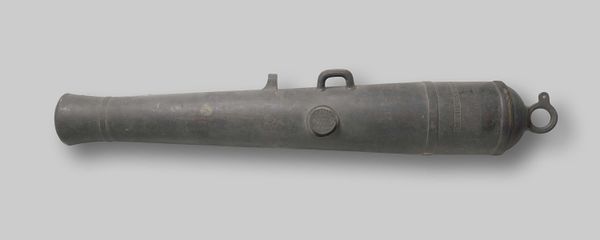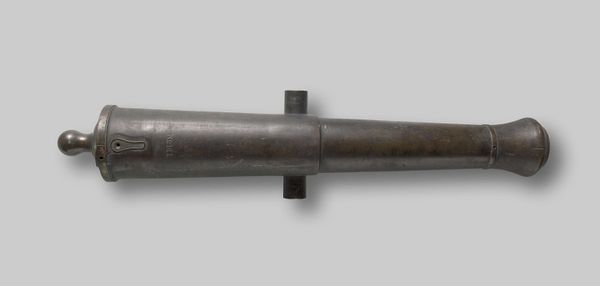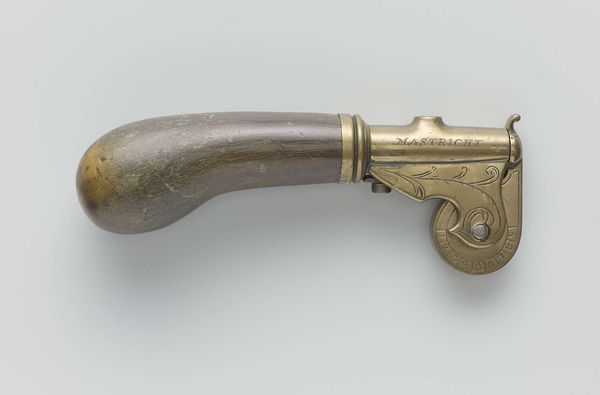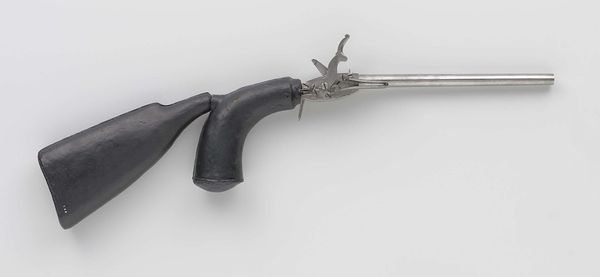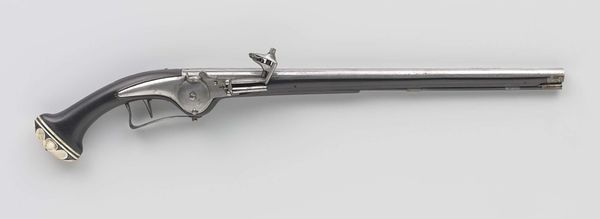
Dimensions: total length 92 cm, total diameter 11.2 cm, length 11 cm, length 81 cm, calibre 2.8 cm, total weight 18.6 kg
Copyright: Rijks Museum: Open Domain
Editor: Here we have a piece titled "Buitgemaakt Geschut," which translates to "Captured Gun," a metal sculpture, potentially Baroque in style, created sometime between 1750 and 1850 by an unknown artist. It’s imposing, isn’t it? Sort of a stark, metallic relic. What jumps out at you when you look at it? Curator: Well, you know, the weight of history. Think about it. Someone, somewhere, put their heart, soul, and maybe even a bit of swagger, into designing this thing. Look at the baroque flourishes on the muzzle! A cannon wasn't just a weapon, it was a statement. I can almost feel the echoes of gunpowder and ambition radiating from the cold metal. It makes me wonder what "capture" meant at the time, and what it means now. Does capture change meaning as we age? Editor: That's a powerful image, ambition radiating from cold metal. It does have a strangely ornamental quality for something meant for destruction. Do you think that contrast was intentional? Curator: Absolutely! Think about Baroque architecture – the sheer opulence! Even weapons became canvases for displaying power. Plus, there’s an underlying commentary here on the spoils of war, the victor's trophies. Was it a celebration or a stark reminder of conflict? Is that ornamentation ironic or integral to its purpose? That, to me, is its fascinating ambiguity. It sparks so many conversations, you see? Editor: I see what you mean. I initially just saw a static object, but now I am thinking about power dynamics and artistry. That's definitely a more nuanced understanding! Curator: And that, my friend, is the magic of art. To open up your eyes and invite reflection! It is, at its best, an invitation.
Comments
No comments
Be the first to comment and join the conversation on the ultimate creative platform.





